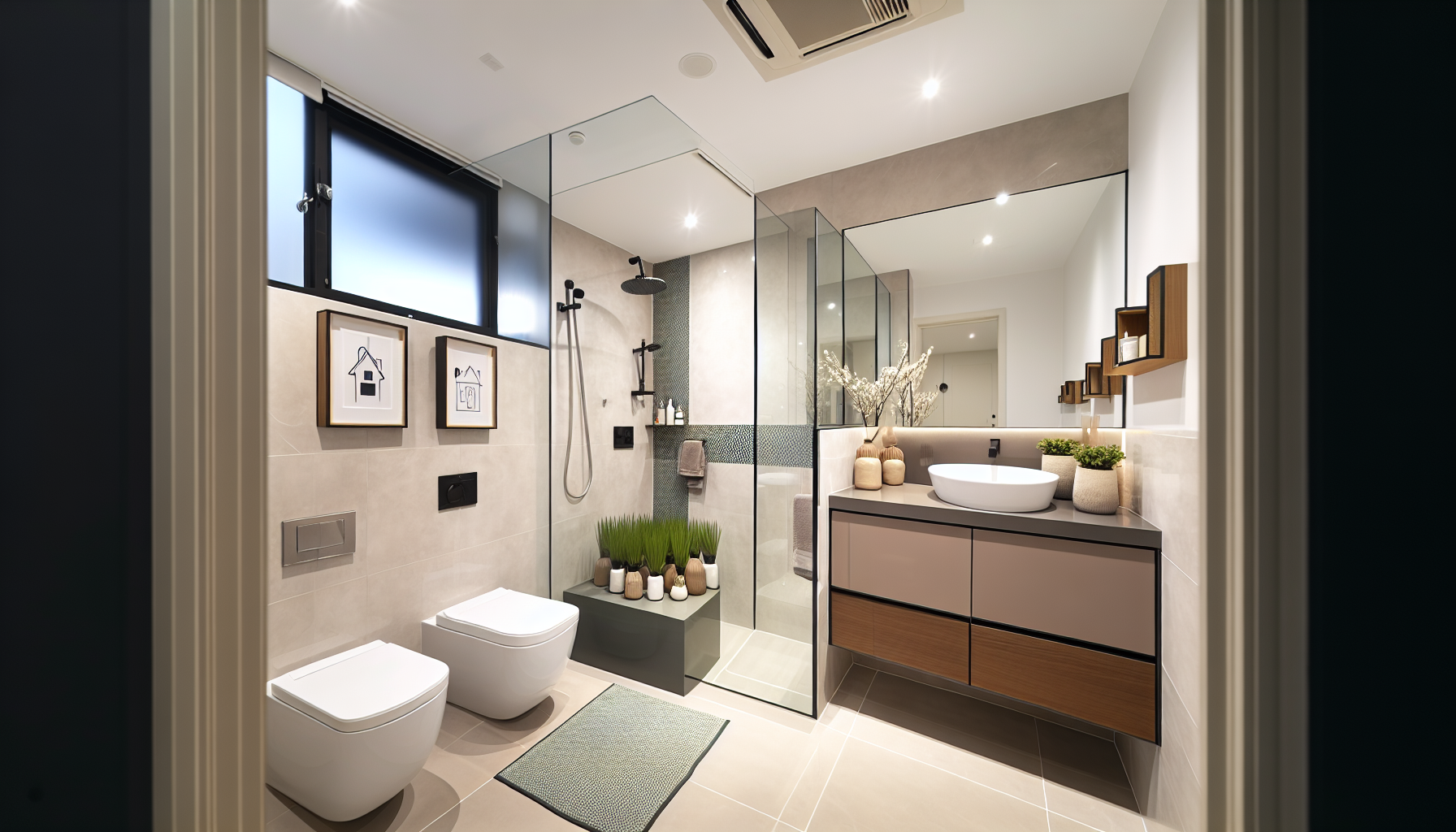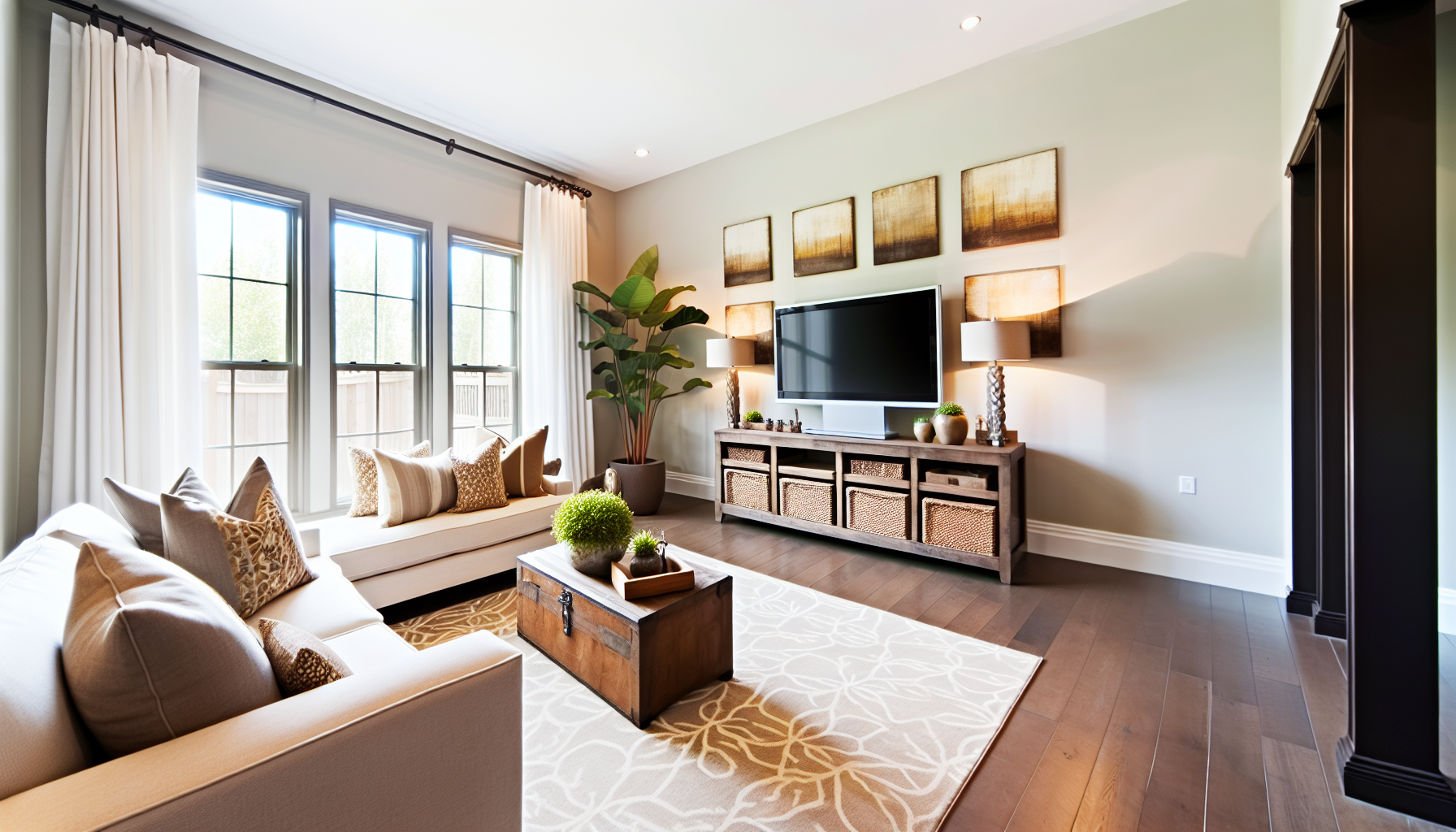Exploring the ROI of renovations and explaining the financial potential of renovating before selling can unlock financial potential when selling your home. This guide offers clarity on how renovation investments could translate into profitable returns. From high-value projects to cost sinks to avoid, we’ll help you discern where to channel your resources for maximum impact.
Key Takeaways
- Strategic home renovations can significantly enhance a property’s market value, but homeowners should focus on high-ROI projects like kitchen and bathroom upgrades and curb appeal enhancements to ensure the best financial return.
- While calculating the ROI of home renovations is straightforward, it is influenced by various factors including location, market conditions, and the quality of workmanship; thus, discernment is required when selecting renovation projects.
- Homeowners should avoid overinvesting in luxury and aesthetic upgrades that do not contribute extra square footage, as these projects typically yield lower ROI and may not be appealing to a broad range of buyers.
The Power of Renovations: Boosting Your Home’s Value

Well-planned home renovations can substantially increase a property’s market value. Enhancing a home’s living space, energy efficiency, and aesthetics can contribute to this significant growth in value. However, not all home improvement projects offer the same ROI. On average, homeowners can expect a 70% return on their home improvements, meaning that most projects may not completely pay for themselves in increased home value, considering the renovation costs.
These numbers underscore the importance of strategic renovations. Focusing on projects with higher ROI can lead to a more effective increase in a property’s market value. Understanding the distinction between short-term and long-term value is also significant. For instance, while trendy renovations may increase your home’s value shortly after they’re completed, they may lose their appeal over time.
On the other hand, renovations that enhance functional living space, such as adding an accessory dwelling unit, or upgrading essential home components can offer more lasting value with the right renovation plans.

The Importance of ROI in Home Renovations
Understanding your home renovation project’s ROI is important. Why? Because ROI provides a clear financial metric of the profitability of your project, helping you assess whether your investment in a specific renovation will pay off in terms of increased home value. In essence, the higher the ROI, the greater the portion of the renovation cost you can recoup through an increase in your home’s value.
Calculating home improvement ROI is relatively straightforward. It involves determining the net gain from the home improvement (the increase in home value) and dividing it by the cost of the improvement. For example, if a kitchen remodel costs you $20,000 and increases your home’s value by $14,000, your average ROI would be 70%.
Factors Influencing ROI
Although ROI is a beneficial metric, keep in mind that multiple factors can affect it. One of these is the property’s location. For instance, remodeling can enhance ROI regardless of the property’s location or the state of the residential property market. However, neighborhood, region, and market conditions all contribute to the overall impact on ROI.
Another important factor is the quality of the workmanship. During renovations, the quality of design, construction, and materials significantly contribute to achieving a substantial ROI. So, whether you’re upgrading appliances or undertaking a full kitchen renovation, ensuring top-notch workmanship is key to maximizing the value added by your renovation project.
High-ROI Renovation Projects for Selling Success

Focusing on high-ROI remodeling projects when getting ready to sell your property can provide a competitive edge. Some renovation projects known to yield a high ROI and appeal to potential buyers include kitchen makeovers, bathroom enhancements, and improvements to the property’s curb appeal.
Why are these projects particularly effective? Because they not only enhance the functionality and aesthetic appeal of your home but also cater to the preferences of a broad range of buyers. For instance, updating the kitchen and bathrooms can offer a nearly 85% return on investment, making these areas a top priority for increasing a property’s marketability.
Kitchen Makeovers
Kitchen makeovers are a home seller’s secret weapon. They attract a diverse pool of buyers and have the potential to generate a high ROI, making them a valuable investment before selling your home. But what should your kitchen makeover entail?
The key to achieving a high ROI is balancing functionality and aesthetics. A well-designed kitchen should accommodate everyday use and appeal to a wide range of potential homebuyers. This could involve anything from installing new fixtures and appliances to adding a fresh coat of paint or upgrading the flooring. Refinishing cabinets is another detail that matters when it comes to creating a kitchen that buyers will love.
Bathroom Enhancements
Much like kitchen makeovers, bathroom enhancements can significantly increase your property’s value. These enhancements should prioritize functionality and contemporary aesthetics, which potential buyers often seek.
Current trends in bathroom renovations include:
- New flooring
- Contemporary lighting fixtures
- Upgraded vanities
- Incorporation of luxury features like radiant floor heating and jet tubs
While these upgrades may require an upfront investment, they can significantly enhance the appeal of your rental properties and attract a wider pool of potential buyers.
Curb Appeal Upgrades

First impressions matter, especially when it comes to real estate. Hence, improving your property’s curb appeal is a smart move. Landscaping and exterior improvements can yield a high return on investment and appeal to potential buyers, making your property stand out in the market.
The ROI for exterior improvements can be as high as 80%, emphasizing their significance in enhancing your property’s value. Even simple tasks like yard cleanup, adding fresh mulch, and enhancing outdoor lighting can significantly improve your property’s curb appeal, contributing to a successful home sale.
Lower-ROI Projects to Avoid Before Selling
Although focusing on high-ROI renovations is key, being aware of projects that may not provide a high ROI is equally vital. Some renovation projects, such as luxury, entertainment, and purely aesthetic upgrades that do not add extra square footage, are less likely to pay off in terms of increased home value.
This isn’t to say that luxury or aesthetic upgrades are always a bad idea. In some cases, particularly in high-income areas, these upgrades can enhance the home’s appeal to a specific market segment prepared to pay a premium for them. However, generally, if you’re looking to maximize your ROI, it’s advisable to focus on functional, universally appealing renovations that cater to a broad range of potential buyers.
Over-the-Top Luxury Additions
Over-the-top luxury additions, while enticing, may not always yield a high ROI. These might include upscale bathroom additions, midrange and major upscale kitchen remodels, and major midrange bathroom and master suite additions.
The cost of such luxury additions can vary significantly, ranging from $21,000 to $73,500, reflecting the expense of specialized fixtures, high-end finishes, and unique architectural features. Therefore, unless your property is situated in a highly affluent area where buyers expect such amenities, these additions may not yield a proportional increase in your property’s value relative to their expenses.
Unnecessary Structural Changes
Unnecessary structural changes can be an expensive endeavor and may not add substantial value to your property. These changes might involve modifying load-bearing components or implementing alterations that do not impact the house’s structure, which could be considered unnecessary if the home does not have any pre-existing structural or electrical issues.
These changes can even deter cautious buyers who may be concerned about unpermitted work and encounter challenges in securing financing. Therefore, it’s generally wise to avoid unnecessary structural changes when preparing your home for sale.
Financing Your Renovation: Options and Considerations
Financing a home renovation doesn’t need to be challenging. There are several financing options available to homeowners, including government subsidies, cash-out refinancing, and home equity loans.
These financing options offer opportunities to fund your renovation projects, and in some cases, they can even provide tax benefits. For instance, homeowners can potentially benefit from tax deductions on interest payments if the loan used for renovations complies with IRS regulations.
Preparing for a Successful Sale: Tips and Strategies
Getting your home ready for a successful sale entails more than renovations. It’s about presenting your home in the best possible light to attract potential buyers. Two major components of this process are staging your home and working with real estate professionals.
Staging your home means showcasing your property in a way that resonates with potential buyers. On the other hand, working with real estate professionals provides you with expert guidance and resources to navigate the selling process, from pricing your property correctly to ensuring legal and ethical compliance.
Staging Your Home

Staging your home can significantly impact its selling success. By presenting your property in a manner that appeals to potential buyers, you can help them envision themselves living in your home, which can drive up its value.
The process of staging involves:
- Enhancing the aesthetic appeal of your home
- Showcasing its best features
- Giving the kitchen a facelift
- Decluttering and depersonalizing the space
- Updating the flooring
- Enhancing the lighting
Each of these enhancements can help potential buyers imagine themselves living in your home, making it more likely that they’ll make an offer.
Working with Real Estate Professionals
Collaborating with real estate professionals can offer valuable insights and guidance during your home’s sale. They offer a comprehensive market analysis that includes monthly housing inventory fluctuations and the latest market specifics, helping you price your property accurately and competitively.
Moreover, real estate professionals can offer specialized assistance in navigating the complex contracts and disclosures associated with selling a property. Their expertise in negotiation can also help you achieve the highest possible selling price for your property. So, while selling independently can save you commission fees, the expertise, resources, and network that real estate professionals provide can often more than makeup for that cost.
Summary
In summary, strategic renovations can significantly increase your property’s market value, making it more appealing to potential buyers. By focusing on high-ROI projects, avoiding unnecessary luxury additions and structural changes, and working with real estate professionals, you can set yourself up for a successful sale. Remember, every home and market is unique, so it’s essential to consider your specific situation when planning your renovation projects and sale strategy.
Frequently Asked Questions
What is ROI in remodeling?
The ROI in remodeling is the estimated value the project adds to the home divided by the project cost. Certain remodeling projects, such as wood decks, window replacements, and kitchen and bathroom upgrades, tend to generate the highest ROIs.
How much value do renovations add?
Renovations can add significant value to a property, with the potential to provide strong returns on the investment.
How profitable is renovating houses?
Renovating houses can be profitable, with a minimum 30%-60% return on a mid-range renovation or a healthy target for net profit being approximately 10% of the resale price or expected after-repair value (ARV). It’s important to consider the specific market and location when estimating costs and potential returns.
What factors influence the ROI of home renovations?
The ROI of home renovations can be influenced by factors such as the property’s location, market conditions, and the quality of workmanship. Consider these factors when planning your home renovation project.
What types of renovation projects typically yield a high ROI?
Renovating the kitchen, bathroom, and improving curb appeal are renovation projects that typically yield a high ROI. These improvements can significantly increase the value of your property.

